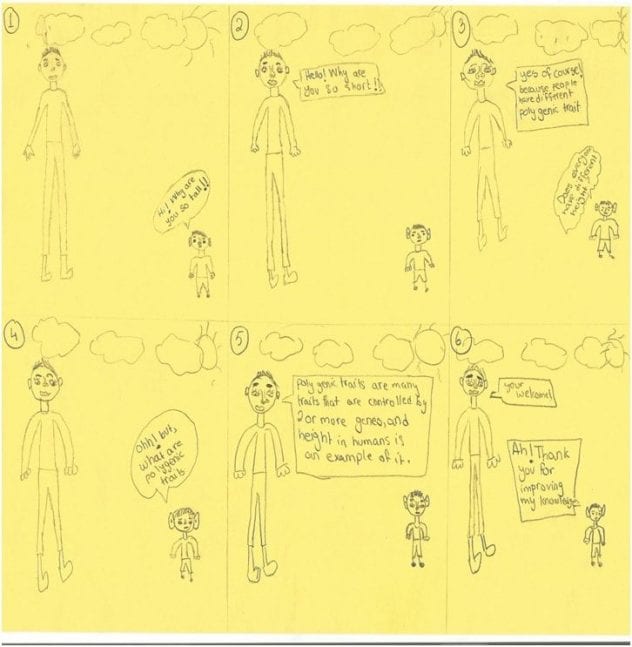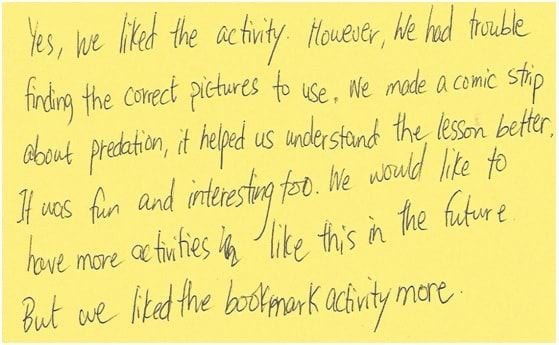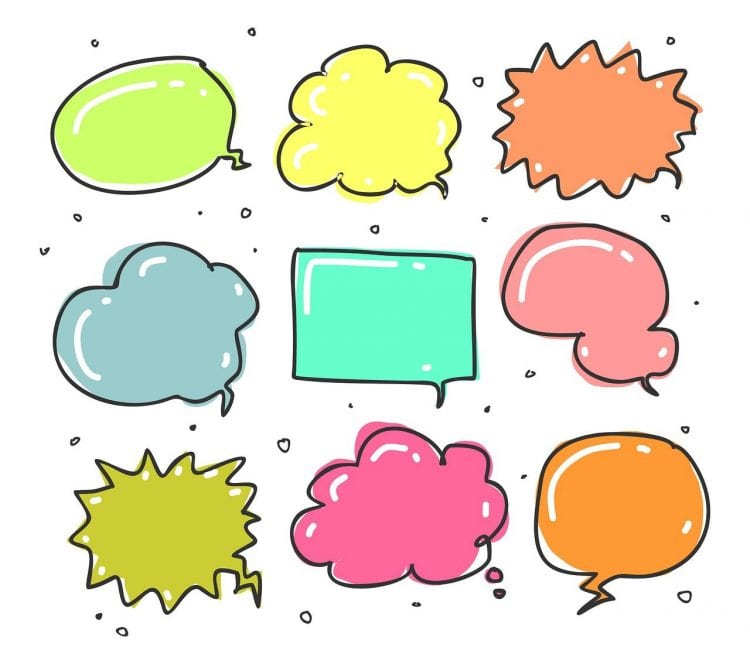 By Iman Dernaika (Highschool Biology Teacher, MEd student in Imaginative Education)
By Iman Dernaika (Highschool Biology Teacher, MEd student in Imaginative Education)
I teach in a high school in Saudi Arabia. I am also a graduate student studying Imaginative Education at Simon Fraser University. Before beginning my studies, I tended to employ traditional methods of teaching. I would stand and explain and my students would sit and (hopefully) listen. Besides using some video clip or songs, I didn’t vary my practice much. In my classes, the students were passive learners. They were receivers of information and were not given a chance to be imaginative in their learning. They didn’t seem particularly engaged in learning.
In my Action Research project I decided to focus on how using comic strips in my Grade 9 and 11 Biology classes could increase students’ engagement, creativity and involvement in their learning.
Unfortunately, some students find the Biology curriculum boring and hard. This is why I need to use cognitive tools. I have learned that employing cognitive tools fosters student imagination and engagement. The act of creating a comic strip employs multiple cognitive tools such as the story-form, mental images, humour, the literate eye, extremes & limits of reality, sense of wonder, and even sense of agency. Creating comic strips is a great interactive technique to keep students focused in class and working independently. While students develop a deeper understanding of the topic, they can also emotionally and imaginatively engage with the topic.
Examples

Because it was their first time to create a comic strip, it took time to do it. Although this comic strip is three simple panels, it describes the definition of commensalism and shows a very clear example about it.

Height is an example of a polygenic trait. In this comic strip, students chose characters with different heights and created a scenario that best matches with the definition. It is well structured and explained.
Biology teacher interview
As part of my Action Research project I interviewed a colleague that used comic strips in her teaching. In this interview, I asked her about her thoughts on using comic strips in Biology classes, students’ responses to this activity, students’ understanding of the topic as a result of creating comic strips and any changes she would suggest when reusing this activity. My colleague found that:
- Students were interested in the activity and created quality work;
- Creating comic strips helped students to understand the topic in depth;
- Using this activity was beneficial as it simplified the content but also broadened students’ understanding. It allowed for student imagination and humour.
My colleague would revise using comic strips in the future by:
- providing the students the option to choose between two activities such as creating a song or creating comic strips. (Adapting the activity would allow more students to be engaged and would aid the teacher in meeting all students’ needs.)
- dividing the students into small groups to ensure that all students are participating in the activity.
Students’ reflections

My Findings
- Most students were able to formulate a scenario that was matching the content.
- Students’ imaginations played a crucial role in inventing meaningful drawings and images.
- Most students enjoyed conducting a new strategy in the Biology classroom.
- Most students found it a helpful way to foster their memory and deepen their understanding.
- Few students preferred to do this activity as homework instead of as classwork.
- Some students had trouble using the online comic strip websites or using their laptops in class. As a result, they were unmotivated to complete their assignment.
I will use my research findings to adapt my use of comic strips in teaching. More broadly, I will continue to explore how to use cognitive tools to engage my students in their learning.
References
Cheesman, K. (2005). Using Comics in the Science Classroom. Journal of College Science Teaching. Retrieved from http://www.nsta.org/publications/news/story.aspx?id=51320


I love this idea! I also like how the two comics are different but still show learning. Thanks for providing the examples so I can show them to my students. I teach 3/4 but this totally applies!